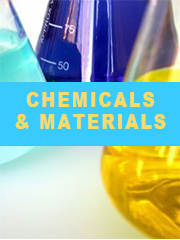Report overview
Cross-linked Polyethylene Foam (XLPE) insulation is a chemical or physical method that changes the molecular structure of polyethylene from a linear molecular structure to a three-dimensional network structure, from a thermoplastic material to a thermosetting material, thus increased the operating temperature from 70 ? C to 90 ? C, with mechanical properties greatly improved
This report aims to provide a comprehensive presentation of the global market for Cross-linked Polyethylene Foam (XLPE), with both quantitative and qualitative analysis, to help readers develop business/growth strategies, assess the market competitive situation, analyze their position in the current marketplace, and make informed business decisions regarding Cross-linked Polyethylene Foam (XLPE). This report contains market size and forecasts of Cross-linked Polyethylene Foam (XLPE) in global, including the following market information:
Global Cross-linked Polyethylene Foam (XLPE) Market Revenue, 2018-2023, 2024-2029, ($ millions)
Global Cross-linked Polyethylene Foam (XLPE) Market Sales, 2018-2023, 2024-2029, (K MT)
Global top five Cross-linked Polyethylene Foam (XLPE) companies in 2022 (%)
The global Cross-linked Polyethylene Foam (XLPE) market was valued at US$ 1579.4 million in 2022 and is projected to reach US$ 2440.2 million by 2029, at a CAGR of 6.4% during the forecast period. The influence of COVID-19 and the Russia-Ukraine War were considered while estimating market sizes.
Global cross-linked polyethylene foam (XLPE) main players include Sekisui Chemical, BASF, Furukawa, Zotefoams, Armacell, etc., totally accounting for about 55% of the market. Asia Pacific is the largest market, with a share over 48%. As for the types of products, it can be divided into physically cross-linked polyethylene foam and chemically cross-linked polyethylene foam. The most common product is physically cross-linked polyethylene foam, with a share over 90%. In terms of applications, it is widely used in construction, automotive parts, anti-static, electronics hardware, sports and leisure and others. Construction is the largest application, holding a share over 20%.
We surveyed the Cross-linked Polyethylene Foam (XLPE) manufacturers, suppliers, distributors and industry experts on this industry, involving the sales, revenue, demand, price change, product type, recent development and plan, industry trends, drivers, challenges, obstacles, and potential risks.
Total Market by Segment:
Global Cross-linked Polyethylene Foam (XLPE) Market, by Type, 2018-2023, 2024-2029 ($ Millions) & (K MT)
Global Cross-linked Polyethylene Foam (XLPE) Market Segment Percentages, by Type, 2022 (%)
Physically Cross-linked Polyethylene Foam
Chemically Cross-linked Polyethylene Foam
Global Cross-linked Polyethylene Foam (XLPE) Market, by Application, 2018-2023, 2024-2029 ($ Millions) & (K MT)
Global Cross-linked Polyethylene Foam (XLPE) Market Segment Percentages, by Application, 2022 (%)
Construction
Automotive Parts
Anti-Static
Electronics Hardware
Sports and Leisure
Others
Global Cross-linked Polyethylene Foam (XLPE) Market, By Region and Country, 2018-2023, 2024-2029 ($ Millions) & (K MT)
Global Cross-linked Polyethylene Foam (XLPE) Market Segment Percentages, By Region and Country, 2022 (%)
North America
US
Canada
Mexico
Europe
Germany
France
U.K.
Italy
Russia
Nordic Countries
Benelux
Rest of Europe
Asia
China
Japan
South Korea
Southeast Asia
India
Rest of Asia
South America
Brazil
Argentina
Rest of South America
Middle East & Africa
Turkey
Israel
Saudi Arabia
UAE
Rest of Middle East & Africa
Competitor Analysis
The report also provides analysis of leading market participants including:
Key companies Cross-linked Polyethylene Foam (XLPE) revenues in global market, 2018-2023 (Estimated), ($ millions)
Key companies Cross-linked Polyethylene Foam (XLPE) revenues share in global market, 2022 (%)
Key companies Cross-linked Polyethylene Foam (XLPE) sales in global market, 2018-2023 (Estimated), (K MT)
Key companies Cross-linked Polyethylene Foam (XLPE) sales share in global market, 2022 (%)
Further, the report presents profiles of competitors in the market, key players include:
Armacell
Sekisui Chemical
BASF
Furukawa
W. K PP GmbH
Toray Plastics
Zotefoams
Zhejiang Jiaolian
Huzhou Huaming Plastic Products
Zhejiang Runyang New Material
Hubei Xiangyuan New Material
Palziv Group
Outline of Major Chapters:
Chapter 1: Introduces the definition of Cross-linked Polyethylene Foam (XLPE), market overview.
Chapter 2: Global Cross-linked Polyethylene Foam (XLPE) market size in revenue and volume.
Chapter 3: Detailed analysis of Cross-linked Polyethylene Foam (XLPE) manufacturers competitive landscape, price, sales and revenue market share, latest development plan, merger, and acquisition information, etc.
Chapter 4: Provides the analysis of various market segments by type, covering the market size and development potential of each market segment, to help readers find the blue ocean market in different market segments.
Chapter 5: Provides the analysis of various market segments by application, covering the market size and development potential of each market segment, to help readers find the blue ocean market in different downstream markets.
Chapter 6: Sales of Cross-linked Polyethylene Foam (XLPE) in regional level and country level. It provides a quantitative analysis of the market size and development potential of each region and its main countries and introduces the market development, future development prospects, market space of each country in the world.
Chapter 7: Provides profiles of key players, introducing the basic situation of the main companies in the market in detail, including product sales, revenue, price, gross margin, product introduction, recent development, etc.
Chapter 8: Global Cross-linked Polyethylene Foam (XLPE) capacity by region & country.
Chapter 9: Introduces the market dynamics, latest developments of the market, the driving factors and restrictive factors of the market, the challenges and risks faced by manufacturers in the industry, and the analysis of relevant policies in the industry.
Chapter 10: Analysis of industrial chain, including the upstream and downstream of the industry.
Chapter 11: The main points and conclusions of the report.
